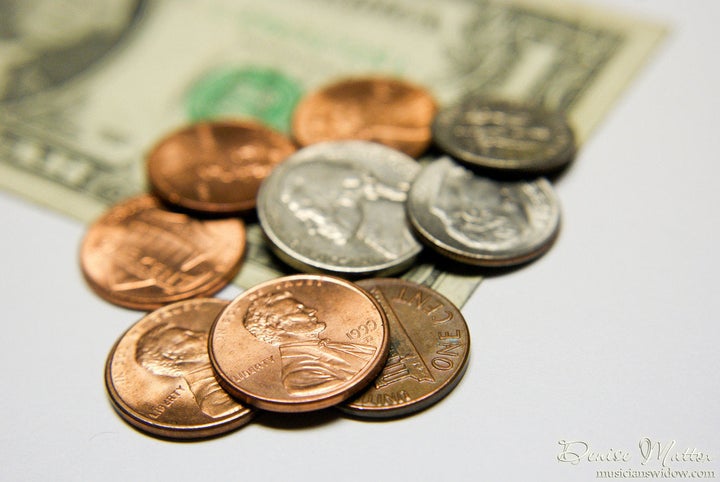
On the fun-o-meter, I'd probably rank back-to-school shopping right above getting a flu shot and preparing income taxes. Never mind the hassle of figuring out what our kids need for the coming school year and dragging them to the mall; it's just so expensive year after year.
For example, our son insists that we replace his baseball glove and bat as he enters 7th grade. (He's right -- his four-year-old mitt has seen better days.) Our daughter is starting soccer and needs cleats. Good ones aren't cheap and footwear is one area where we refuse to scrimp.
Many years ago, my wife and I learned our lesson and started setting aside money each month for the inevitable -- and unexpected -- expenses that crop up each fall. Through trial and error and sound advice from fellow parents, we've developed a back-to-school budgeting checklist. If you're new to this process or simply want to save money and time, try these tips:
First, calculate how much you can afford to spend on school-related expenses without blowing your overall budget or racking up debt. Scoring bargains won't help your bottom line if you end up paying interest on unpaid balances.
- Examine previous years' bills and compare notes with other, more experienced parents.
- Ask the school which supplies they expect you to buy. Pool resources with other families to take advantage of volume discounts and sales.
- Spread clothing purchases throughout the year so your kids won't outgrow everything at once. Take advantage of off-season sales.
- Review school dress codes so you don't waste money on inappropriate clothing.
- Before buying new clothing or accessories, look for "gently used" items in the closets of your older kids, friends and neighbors, at garage sales, thrift and consignment stores, and sites like Craigslist. While you're at it, sell or donate items you no longer need.
- Find out how much extracurricular activities (athletics, music, art, etc.) cost. Account for uniforms, membership dues, private lessons, field trips, snacks, etc.
- Rent or buy used sporting equipment or musical instruments until you're sure they'll stick with an activity. (Try PlayItAgainSports.com and similar outlets.)
- Compare the cost, convenience and nutritional value of school lunches and snacks versus food you prepare yourself.
- Learn your school's policy on immunizations and see what's covered by your insurance -- or which ones you can access free at health fairs or community clinics.
- Factor in public transportation, school bus or carpool expenses.
- Although shopping online can save money, time and gas, don't forget shipping and return costs, which could undo any net savings. If your kids are old enough, put them in charge of online comparison shopping.
- Clip newspaper and online coupons. Many stores will match competitors' prices even if their own items aren't on sale. Plus, many consolidation websites post downloadable coupons and sale codes for online retailers, including: CouponCabin.com, CouponCode.com, CouponCraze.com, DealCoupon.com, DealHunting.com and Dealnews.com.
- Mobile shopping apps let in-store smartphone and mobile browser users scan product barcodes and make on-the-spot price comparisons, read reviews, download coupons, buy products and more. There are hundreds of popular apps including Price Check, ShopSavvy and PriceGrabber.
Some parents wrestle over whether or not to take their kids on shopping trips. I think it's worth the effort so they can hear and absorb your decision-making process and understand what's available to spend. My kids are probably sick of hearing me say, "I'm going to buy this brand of underwear because it's cheaper, which will give us more money to buy a better-quality jacket."
Back-to-school shopping also provides a good opportunity to teach your kids the difference between "needs" and "wants." You need to replace outgrown shoes, but you can probably squeeze one more year's use out of an older laptop if money is tight. If they're determined to have a pair of Nikes outside your price range, have a separate discussion where you figure out ways they can earn the price difference.
And finally, a word of warning for parents with kids heading off to college: Resist the urge to go crazy furnishing their dorm room until you've asked the school exactly what supplies they provide (e.g., sheets, towels, storage containers) and whether certain items are forbidden (microwave oven, halogen lamps). For kids moving into their first apartment, find out what their new roommates are bringing -- they probably won't need two couches or sets of dishes.
Bottom line: Back-to-school shopping can be tedious, but if you plan carefully, you can save time, money and aggravation.
This article is intended to provide general information and should not be considered legal, tax or financial advice. It's always a good idea to consult a legal, tax or financial advisor for specific information on how certain laws apply to you and about your individual financial situation.